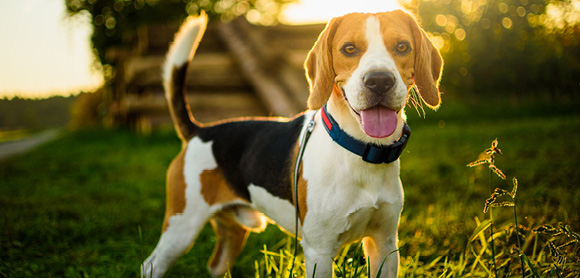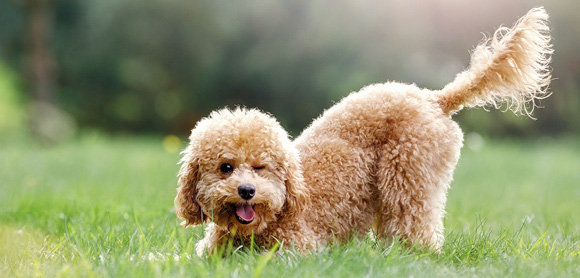To help you understand your pet, we take a deep dive into the tail language of dogs.
As dog owners, many of us like to think we have a deep understanding of our pets and their emotions. However, just like us, dogs have a wide emotional range that can sometimes be tough to decipher.
Here, we explain what different types of tail wags might mean.
Why do dogs wag their tails?
Along with facial expressions and postures, your dog’s tail is a part of their body that they use to communicate with.
Possibly one of the most common misconceptions about dogs is that wagging tails mean they’re happy. Although this is often the reason, it’s not always the case.
This can cause much confusion for people who look for a wagging tail as the means of deciding whether a dog is friendly or not. Rather than a sign of friendliness, a wagging tail should be viewed as a sign of willingness to interact.

Tail language
The complex language of tail wagging doesn’t speak in isolation, but rather alongside the other components of a dog’s body language. You have to consider the rest of your dog’s body language to fully understand the meaning of a wagging tail.
Some body language characteristics to look out for include:
- Wagging tail with barking
- Teeth showing
- Growling
- Ears flattened back
- Ears pricked up
- Whining
- Jumping up
- Posture
- Eye contact
Contrary to what you may believe, the above characteristics can indicate both happy or angry behaviour. For example, an open mouth showing teeth is not necessarily indicative of aggression, as lots of dogs run and play with their mouth open.
As you get to know your dog, you’ll be able to identify when these characteristics are good or bad. Learn more about your dog’s barking, growling or howling here.
If your dog has stopped wagging their tail, it could be a sign of a health issue, which is best discussed with your vet. A good

What does it mean when a dog wags their tail?
Can dogs control their tails? Well, they can certainly control the movement of their tails, though sometimes this is spontaneous, rather than a conscious thought.
Wags can have different meanings, depending on the situation. There are a few things to look out for when identifying the type of wag.
Tail stiffness
Usually, a relaxed, flowing wag is a good sign – but a stiff wag can mean tension or hostility.
Tail height
A high-held wagging tail often means your dog is being enthusiastic.
The height of the wagging tail can also indicate a dog’s level of confidence. A higher tail shows confidence, while a lower-hung tail indicates a more nervous dog.
Tail speed
A fast wag is generally good, while a slow wag can indicate a dog will not be friendly.
Alongside this useful information, you should also take into consideration how the tail is moving.
A broad, swinging wag
This is the most relaxed posture – your dog is usually feeling pleased and ready to interact.
There is research to suggest that if your dog’s tail wags slightly more to their right, they are feeling more positive and receptive, while if the wag swings to their left, they’re feeling negative or anxious.
A small wag with a narrow swing
As you might expect, this wag is a more tentative way for dogs to make their presence felt – they may be feeling unsure.
Similarly, if they’re wagging their tail but holding it lower than their natural, default tail position, this may be a submissive posture, to show they’re not a threat.
A fast wag with tail held high
This is generally a sign of excitement – something has caught your dog’s interest and they are on high alert.
A ‘vibrating’ tail
Tiny, very fast tail movements are a signal your dog is poised to take action. If the tail is held high, it may be a threat posture.
Bear in mind that different dog breeds have different tail positions – for example, greyhounds naturally hold their tails lower than other breeds.
Tail docking
For cosmetic reasons or to prevent injury, sometimes a dog’s tail will be removed in part or in whole. This is known as tail docking.
Tail docking is an illegal practice in the UK, with the only exemptions being if the tail must be removed for medical reasons by a vet or to prevent injury in some breeds of working dogs – such as Rottweilers. The loss of their tail means a dog can have trouble communicating. This makes it much more difficult for owners to understand their dog’s behaviour.
Just as words can mean different things in different contexts, so do wags. Wags and their meanings can also differ from dog to dog. One dog may wag their tail a little higher, a little lower or a little slower than another dog. As you spend more time with your dog and observe their behaviour, you’ll no doubt start to understand their tail language in more detail.
What are the different ways your dog wags their tail? Join in with the conversation over on Petplan's Facebook page.